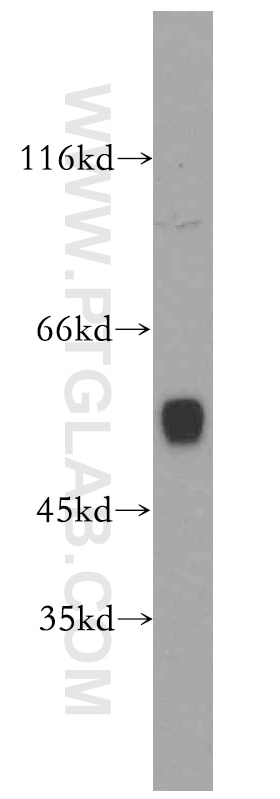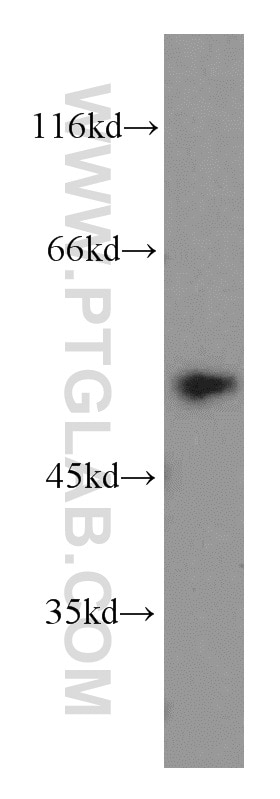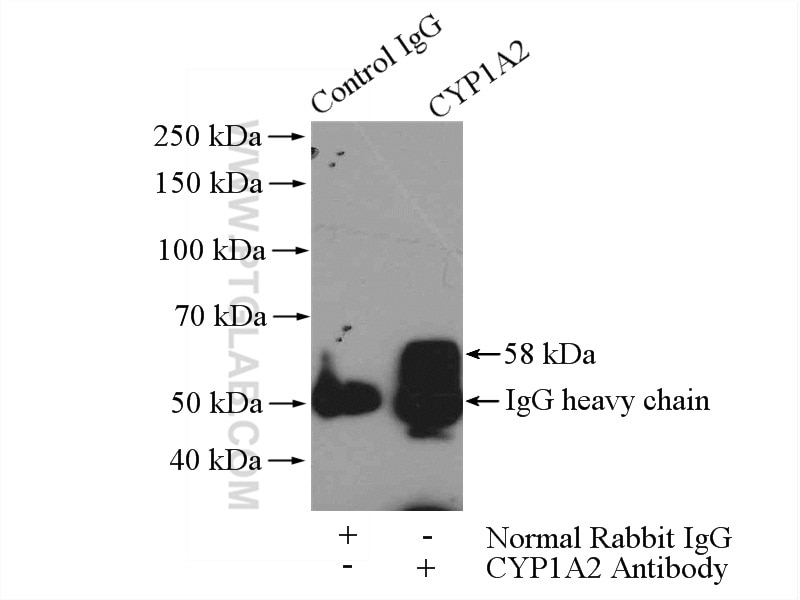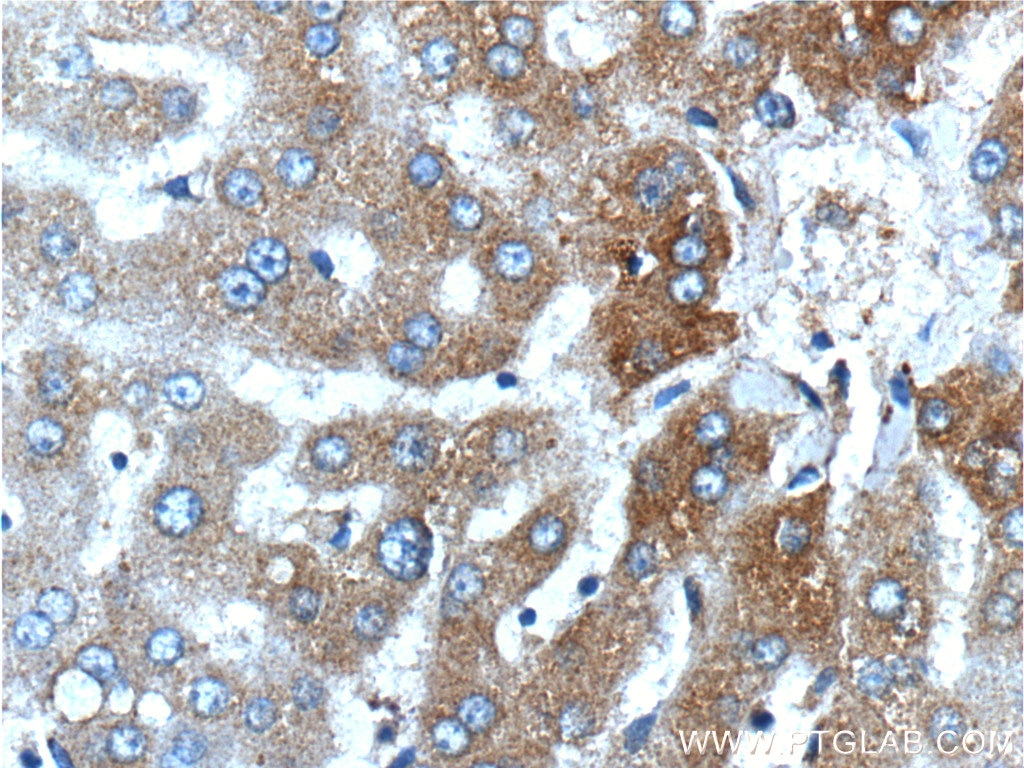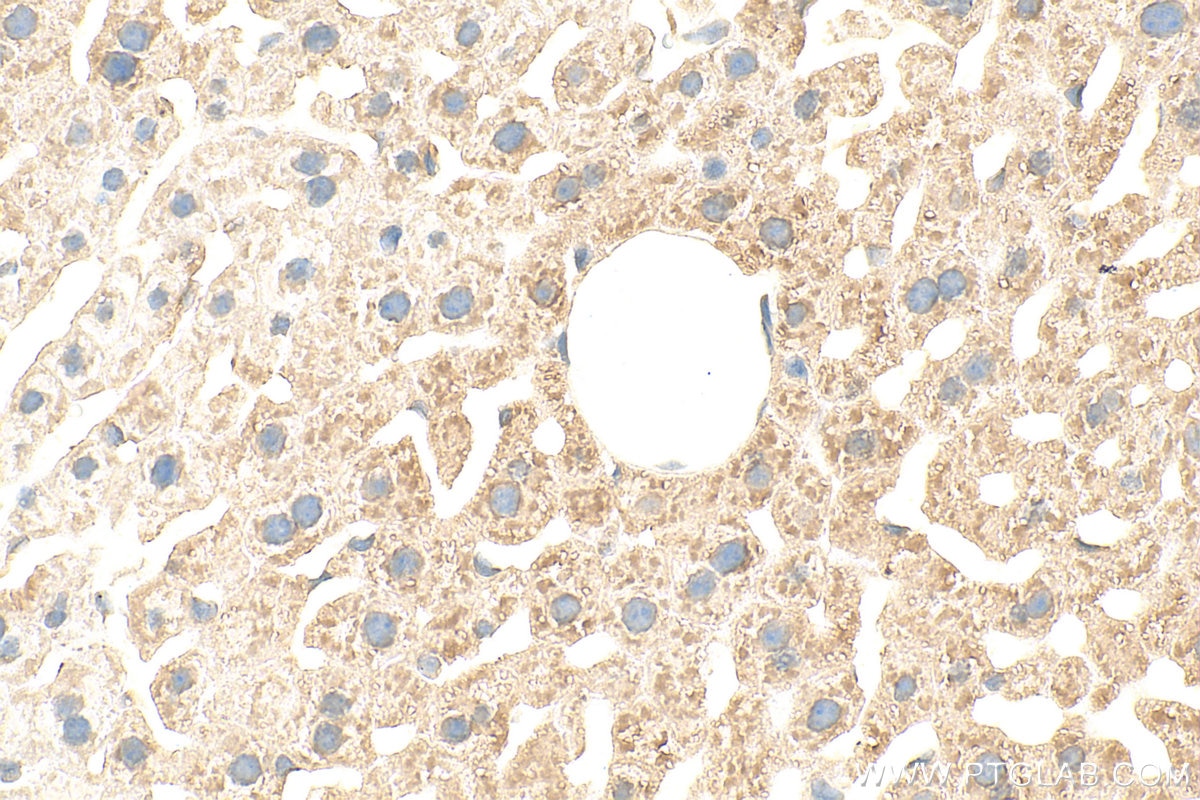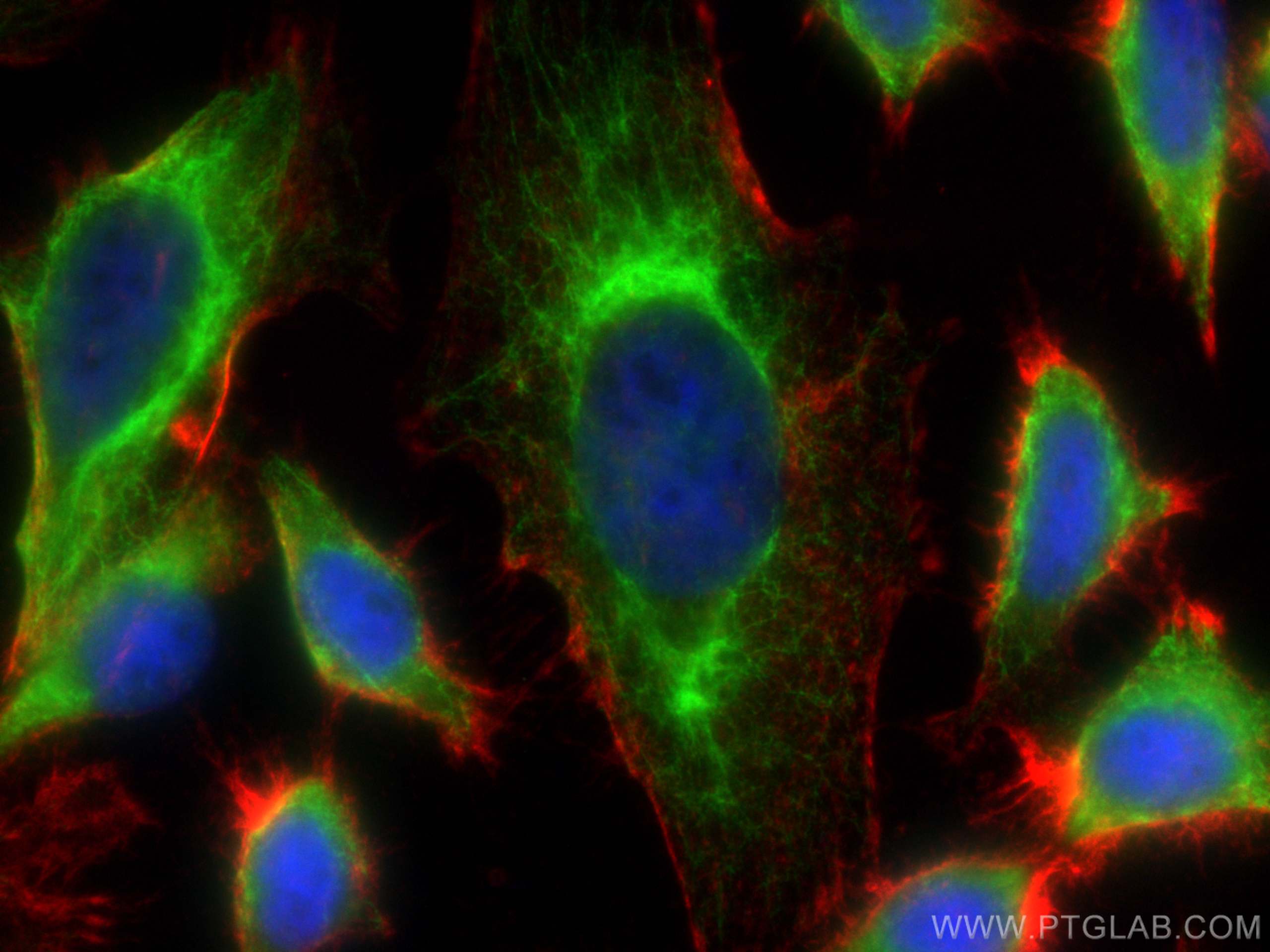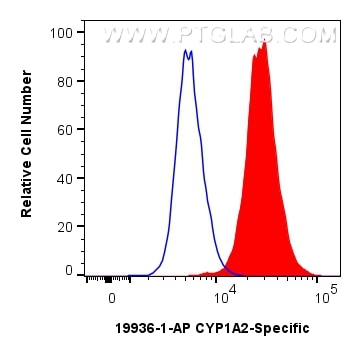Tested Applications
| Positive WB detected in | mouse liver tissue |
| Positive IP detected in | mouse liver tissue |
| Positive IHC detected in | human liver tissue, mouse liver tissue Note: suggested antigen retrieval with TE buffer pH 9.0; (*) Alternatively, antigen retrieval may be performed with citrate buffer pH 6.0 |
| Positive IF/ICC detected in | HeLa cells |
| Positive FC (Intra) detected in | HepG2 cells |
Recommended dilution
| Application | Dilution |
|---|---|
| Western Blot (WB) | WB : 1:500-1:2000 |
| Immunoprecipitation (IP) | IP : 0.5-4.0 ug for 1.0-3.0 mg of total protein lysate |
| Immunohistochemistry (IHC) | IHC : 1:100-1:400 |
| Immunofluorescence (IF)/ICC | IF/ICC : 1:200-1:800 |
| Flow Cytometry (FC) (INTRA) | FC (INTRA) : 0.25 ug per 10^6 cells in a 100 µl suspension |
| It is recommended that this reagent should be titrated in each testing system to obtain optimal results. | |
| Sample-dependent, Check data in validation data gallery. | |
Published Applications
| WB | See 36 publications below |
| IHC | See 1 publications below |
| IF | See 7 publications below |
Product Information
19936-1-AP targets CYP1A2-Specific in WB, IHC, IF/ICC, FC (Intra), IP, ELISA applications and shows reactivity with human, mouse, rat samples.
| Tested Reactivity | human, mouse, rat |
| Cited Reactivity | human, mouse, rat |
| Host / Isotype | Rabbit / IgG |
| Class | Polyclonal |
| Type | Antibody |
| Immunogen | Peptide Predict reactive species |
| Full Name | cytochrome P450, family 1, subfamily A, polypeptide 2 |
| Calculated Molecular Weight | 58 kDa |
| Observed Molecular Weight | 58 kDa |
| GenBank Accession Number | NM_000761 |
| Gene Symbol | CYP1A2 |
| Gene ID (NCBI) | 1544 |
| RRID | AB_10638909 |
| Conjugate | Unconjugated |
| Form | Liquid |
| Purification Method | Antigen affinity purification |
| UNIPROT ID | P05177 |
| Storage Buffer | PBS with 0.02% sodium azide and 50% glycerol pH 7.3. |
| Storage Conditions | Store at -20°C. Stable for one year after shipment. Aliquoting is unnecessary for -20oC storage. 20ul sizes contain 0.1% BSA. |
Background Information
CYP1A2, also named as CP12; P3-450 and P450(PA), belongs to the cytochrome P450 family. Cytochromes P450 are a group of heme-thiolate monooxygenases. In liver microsomes, CYP1A2 is involved in an NADPH-dependent electron transport pathway. It oxidizes a variety of structurally unrelated compounds, including steroids, fatty acids, and xenobiotics. Most active of CYP1A2 is in catalyzing 2-hydroxylation. Caffeine is metabolized primarily by cytochrome CYP1A2 in the liver through an initial N3-demethylation. It also acts in the metabolism of aflatoxin B1 and acetaminophen. CYP1A2 participates in the bioactivation of carcinogenic aromatic and heterocyclic amines. It catalizes the reaction: RH + reduced flavoprotein + O2 = ROH + oxidized flavoprotein + H2O. The antibody is specific to CYP1A2.
Protocols
| Product Specific Protocols | |
|---|---|
| WB protocol for CYP1A2-Specific antibody 19936-1-AP | Download protocol |
| IHC protocol for CYP1A2-Specific antibody 19936-1-AP | Download protocol |
| IF protocol for CYP1A2-Specific antibody 19936-1-AP | Download protocol |
| IP protocol for CYP1A2-Specific antibody 19936-1-AP | Download protocol |
| Standard Protocols | |
|---|---|
| Click here to view our Standard Protocols |
Publications
| Species | Application | Title |
|---|---|---|
Cell Host Microbe Liberation of daidzein by gut microbial β-galactosidase suppresses acetaminophen-induced hepatotoxicity in mice | ||
Hepatology Self-renewal of hepatoblasts under chemically defined conditions by reiterative growth factor and chemical screening. | ||
Acta Biomater Modeling nonalcoholic fatty liver disease on a liver lobule chip with dual blood supply. | ||
ACS Appl Mater Interfaces Modeling Colorectal Cancer-Induced Liver Portal Vein Microthrombus on a Hepatic Lobule Chip | ||
Br J Pharmacol Is platelet responsiveness to clopidogrel attenuated in overweight or obese patients and why? A reverse translational study in mice. | ||
Cell Mol Gastroenterol Hepatol Aryl Hydrocarbon Receptor Activity in Hepatocytes Sensitizes to Hyperacute Acetaminophen-Induced Hepatotoxicity in Mice. |
